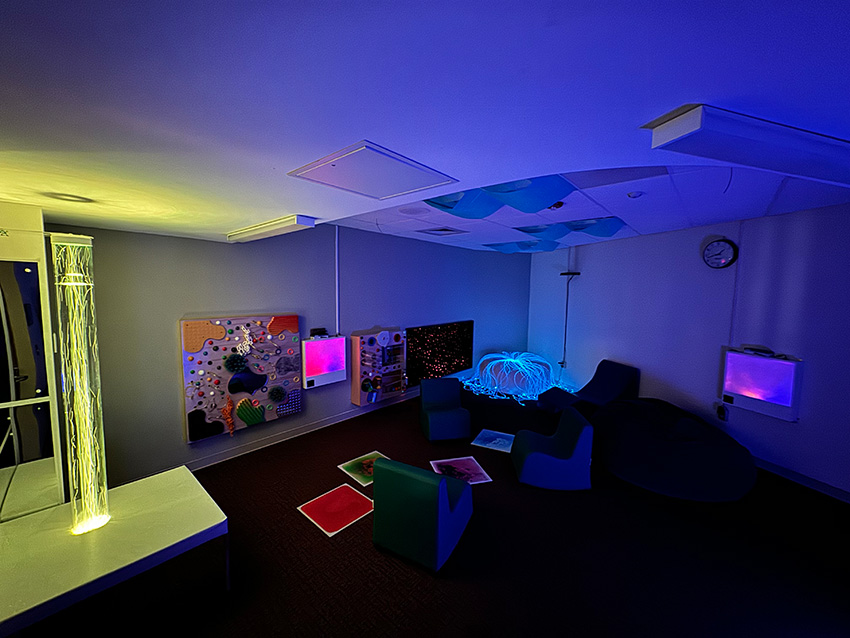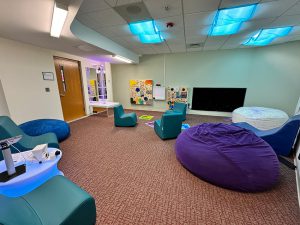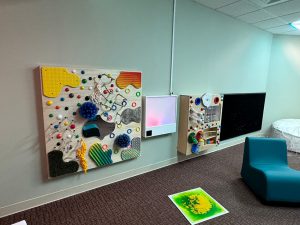

Schuylerville Elementary School has a new space as part of its floor plan, a sensory room that serves as a therapeutic space for children with special needs. Paid for using funds from the federal American Rescue Plan grant, the room was born out of many conversations with elementary school teachers and aides who expressed a need for a space that is modern, takes into account the varying needs of students, and creates a space for children to learn skills in an environment outside the traditional classroom. The space will also serve as an engaging, versatile, fixed location for students who spend a portion of their day receiving rehabilitative services. “Our goal is to create a schedule to use the space proactively for students who need extra assistance in areas like self-regulation and sensory processing,” said Director of Pupil Personnel Services, Jordan Tezanos. “The sensory room was curated to counteract students who may feel overwhelmed or anxious. The calming environment will help students who experience these challenges on a daily basis.” The sensory room features soothing colors, combined with engaging technological furniture, and tech-based features. Each feature is linked to Bluetooth, with simple text and visual instruction for teachers and providers.
- A vibra-acoustic lounger connected to Bluetooth that plays music synced with the vibration of the chair
- Oversized and overstuffed pieces of furniture with fiber optics
- Two audio visual sound panels connected to color boards
- A mirrored acrylic table with outlets and a portable color tablet
- Visually stimulating light features
- Square mats on the ground that create an inviting path to encourage and foster direction following skills

“There was a lot of care and attention that went into choosing pieces that are safe, highly engaging, and focus on choice-based sensory activities,” said Tezanos. “The equipment can be very specifically suited to the student(s) using the room at the time.” “The room is also a proactive way to meet the sensory needs of students prior to when they experience disengagement or dysregulation in the classroom,” added Schuylerville Elementary School Principal, Stacy Marzullo. “It will be a great preset or a great break space.” Marzullo says in recent years, educators have gained a better understanding of sensory input that students require, sensory processing disorders, the need for breaks, and the need to be proactive when students are starting to disengage from their education. “If caught at the right time, we can get them back on track.” The sensory room has a kiosk attached to the wall with a Google form for teachers and students to use for scheduling purposes. Marzullo says the next step is to take a look at how the sensory room can benefit and impact the entire K-5 building. “We now have a built-in, state-of-the-art room that can be added to our daily toolkit to assist students with varying needs,” said Marzullo. “The possibilities will be exciting to explore.”